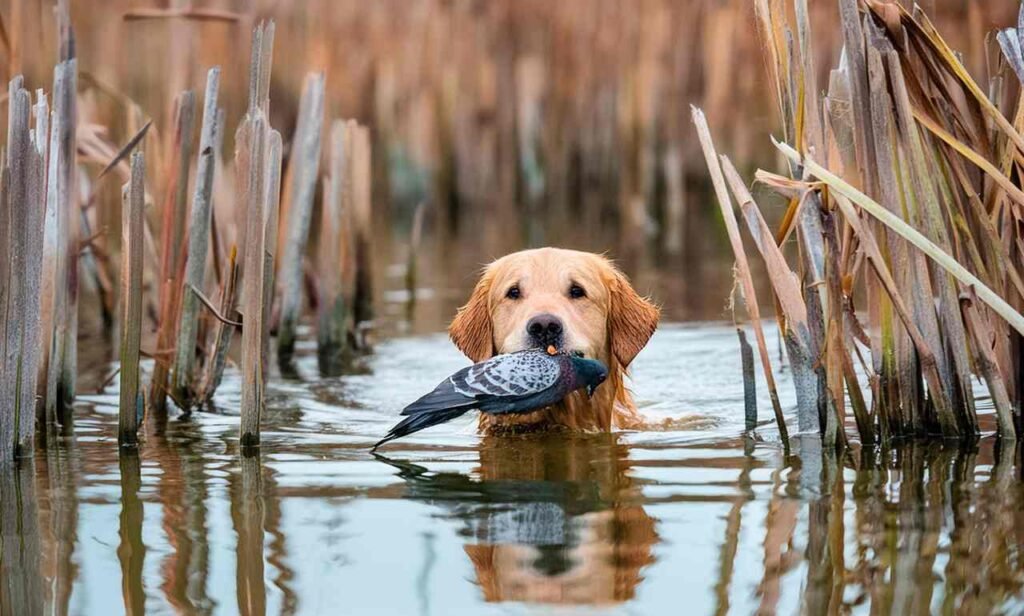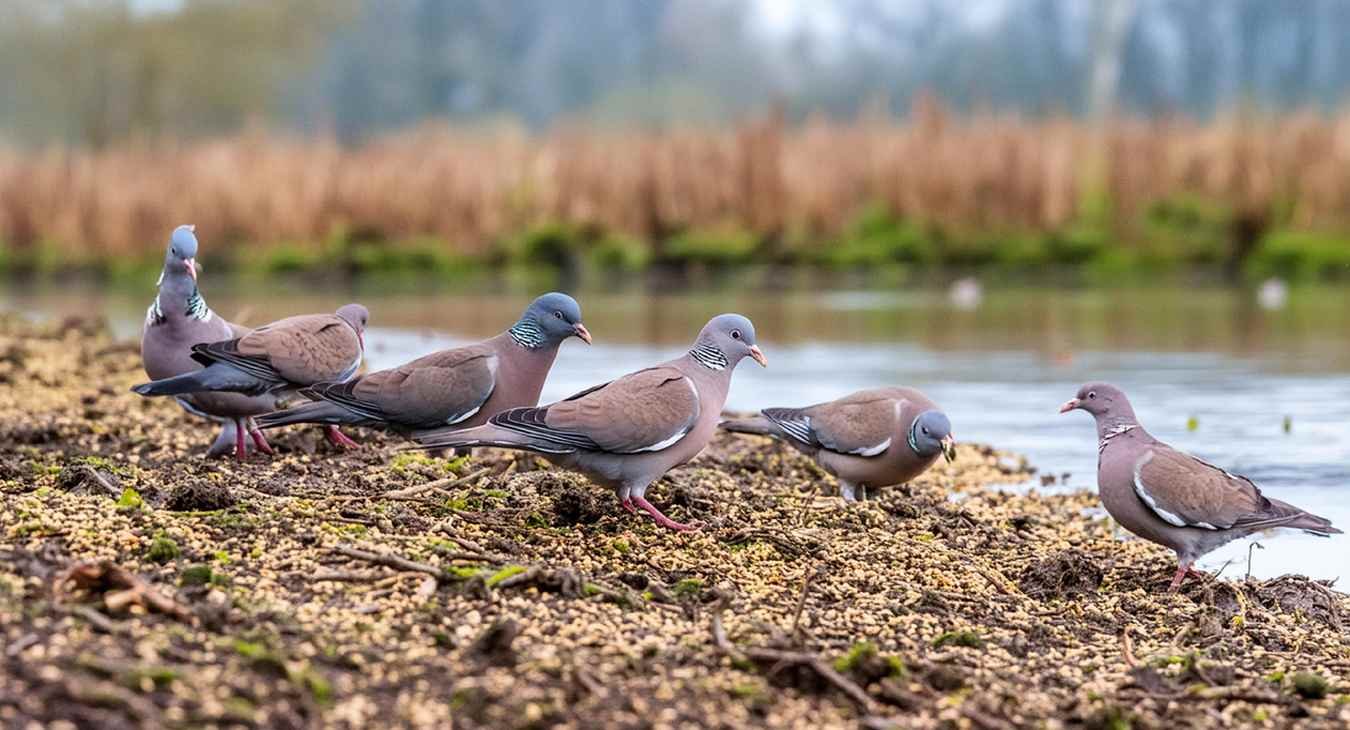The calm of hunting sites in the wetlands is exceptional. Silent waters mirror a lively display of life, as the air hums with the sounds of birds. Living here, you’ll find mourning doves and white-winged doves, hunted birds that excel in such an uncommon ecosystem. Learning to hunt wetland doves effectively means getting the birds’ routine and tailoring your methods to fit this particular backdrop.
This guide delves into proven strategies to elevate your success in the marsh, ensuring a rewarding and ethical hunt.
Understanding the Wetland Ecosystem – A Dove’s Paradise
Wetlands are a haven for doves for several reasons:
- Abundant Food Sources: Wetlands are teeming with life, offering doves a smorgasbord of seeds, grains, and insects throughout the year. Mudflats exposed by receding waterlines and agricultural fields bordering wetlands are particularly attractive feeding grounds.
- Natural Cover and Nesting Sites: The dense reeds, cattails, and other swampland vegetation provide ideal nesting sites and protective cover for doves to raise their young and evade predators.
- Protection from Predators: The dense vegetation and labyrinthine nature of wetlands make it difficult for avian predators to maneuver and hunt doves effectively.
Gearing Up for Wetland Dove Hunting
Choosing the Right Clothing and Footwear:
- Waterproof Materials: These lands are inherently wet! Breathable, waterproof waders or hip boots are essential for navigating muddy terrain and keeping you dry.
- Camouflage Patterns: Select camouflage that blends seamlessly with the dominant vegetation in your wetland hunting area. Common patterns include browns, greens, and muted yellows.
- Comfort and Weather Conditions: Layering your clothing allows you to adjust to changing weather conditions. Remember, comfort is key for a successful hunt.
Essential Wetland Dove Hunting Equipment:
- Shotgun Selection: A 12-gauge or 20-gauge shotgun is perfectly suitable for wetland dove hunting. A shorter barrel length (around 26-28 inches) offers better maneuverability in dense cover.
- Shot Size Selection: Select shot sizes suitable for doves, typically #7.5 or #8 shot.
- Decoys (Optional): While not essential, wetland-specific dove decoys can be very effective in attracting birds. Look for lightweight, floatable decoys that resemble feeding doves.
- Dove Calls: Calls that mimic natural dove sounds, like feeding calls and cooing, can be used to attract birds.
Mastering Wetland Dove Hunting Tactics
Setting Up a Concealed Blind:
- Natural Cover: Utilize natural vegetation like reeds, cattails, or fallen branches to create a blind that blends into the surroundings.

- Minimize Movement and Noise: Doves have excellent eyesight and hearing. Remain still and minimize noise while in your blind to avoid spooking birds.
- Blind Placement: Set up your blind near identified feeding areas, flight paths, or watering holes frequented by doves.
Decoy Strategies for Wetland Doves:
| Decoy Spread | Number of Decoys | Description |
|---|---|---|
| Fixed Spread | 6-12 | Decoys are placed facing various directions on the ground, mimicking a feeding flock. |
| Mobile Spread | 3-6 | A few decoys are attached to small stakes or weights, allowing them to bob gently in the breeze and appear more lifelike. |
Effective decoy placement involves scattering them randomly within your shooting range, mimicking a naturally feeding flock. Avoid placing decoys in straight lines or unnatural clusters.

Utilizing Dove Calls in the Wetland Environment:
- Mimic Natural Sounds: Use calls that replicate sounds commonly heard in wetlands, such as feeding calls or the soft cooing of doves.
- Strategic Call Timing and Variation: Call intermittently throughout the hunt, mimicking the natural rhythm of doves feeding and communicating.
- Avoid Excessive Calling: Overuse of calls can spook doves. Use them strategically to pique their interest, not overwhelm them.
Advanced Techniques for Wetland Dove Hunting (Optional)
Employing Pass Shooting Techniques:
- Anticipate Dove Flight Patterns: Observe dove flight paths and position yourself accordingly. Doves often follow predictable flight lines when entering or leaving feeding areas.
- Leading Your Shot: Doves are fast-flying birds. When taking a shot, aim slightly ahead of the bird’s flight path to ensure a clean hit.
Utilizing Hunting Dogs in Wetlands:
- Benefits of Retrievers: Trained retrievers are invaluable in wetland hunting, especially for retrieving downed birds from water or dense cover.
- Training Considerations: Wetland hunting presents unique challenges for retrievers. Ensure your dog is comfortable with water retrieves and retrieving blind marks.

Essential Considerations for Ethical Wetland Dove Hunting
Understanding and Adhering to Local Hunting Regulations:
- Bag Limits and Seasons: Hunting regulations vary by location. Always check your local wildlife agency’s website for current wetland dove hunting seasons and bag limits.
- Restrictions on Electronic Calls or Hunting Methods: Some regions restrict the use of electronic calls or certain hunting methods in wetlands. Familiarize yourself with these regulations before heading out.
Respecting the Wetland Environment:
- Minimize Disturbance: Wetlands are vital ecosystems for a variety of wildlife. Minimize your impact by staying on designated trails and avoiding excessive noise.
- Proper Disposal of Waste: Always pack out all your trash, including shells and any other hunting waste. Leave the wetland no trace for future hunters and wildlife.
Prioritizing Hunter Safety:
- Firearm Handling: Always prioritize safe firearm handling practices. Maintain firearm control at all times and be aware of your surroundings and fellow hunters.
- Blaze Orange: In low-light conditions, wear blaze orange to increase your visibility to other hunters.
Conclusion
Grasping the swamp habitat and tweaking your strategy opens the door to the exciting world of dove hunting in such a singular setting. Don’t forget, we must hunt ethically at all times. Preserve the wetlands and their creatures, follow hunting rules, and always put safety first on your journey.
Learning to hunt wetland doves can be a fulfilling experience. With commitment, patience, and the insights gained from this guide, you’ll soon embrace the unique challenge and joy of tracking these alert birds in their marsh home. So, gather your equipment, journey to the wetlands and absorb the calm and thrill of the pursuit!

